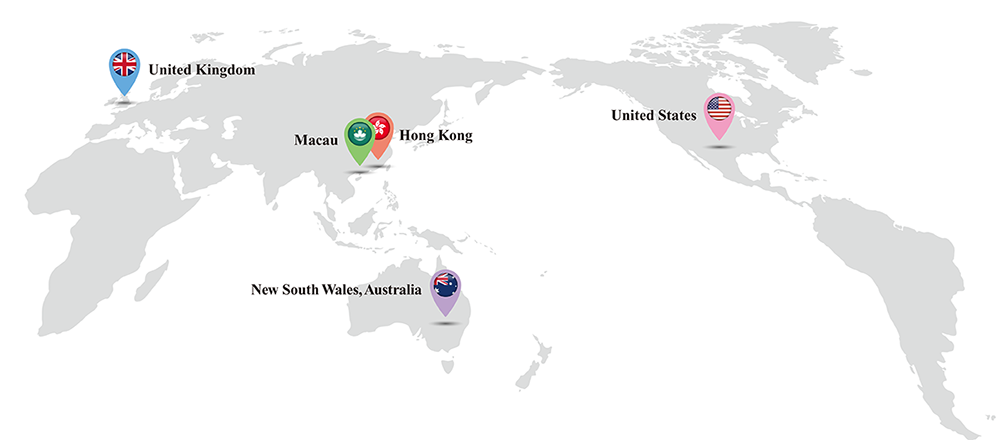5 examples of vaccination for healthcare workers: a global view
Influenza poses threat to countries and regions. HASLink has checked out the strategies and measures adopted by several foreign examples to see how they improve flu vaccination among healthcare workers.
Cash incentives pay off
The National Health Service (NHS) has introduced financial incentives to improve healthcare staff well-being since 2016/17. Improvement in the uptake of influenza vaccination for frontline staff is one of the performance indicators for health services providers. In 2016/17 and 2017/18, providers who achieved an uptake rate of 50% or above would receive payment incentive by proportion. After the new policy was introduced, flu vaccination among healthcare workers in 2016/17 reached 63.2% and 68.7% was recorded last year.
Free flu shot for all Macau residents
Macau extends free seasonal flu vaccination to all permanent residents. Vaccination will be first provided to high-risk population groups including healthcare workers and staff working at residential care homes. Then, non-high-risk groups come second. Dr Lei Chin-ion, Director of the Macau Health Bureau, said at the beginning of this year that the flu vaccination rate among Macau residents was the highest in Asia. The vaccination rate among kindergarten children was 80%, 70% for primary school students and 90% for elderly, which formed a good immune barrier to hinder the spread of influenza virus.
2 awards laud active participation
Under the Government Vaccination Programme (GVP) launched around October every year, free seasonal influenza vaccination is provided for healthcare workers of Department of Health, Hospital Authority, Residential Care Homes for the Elderly, Residential Care Homes for Persons with Disabilities and other Government departments.
HA rolls out a range of facilitating measures to encourage colleagues to take flu jab. This year, two initiatives are introduced. First, ‘HA Outstanding GVP Promotion Campaign Award’ aims to gather creative ideas in GVP promotion. Staff or teams can submit details of their promotion campaign to take part in the award. The 10 most outstanding campaigns will be chosen by the selection panel based on creativity and participation rate. The winning staff and teams will be awarded attractive prizes. Deadline for application is 31 January 2019.
Moreover, three hospitals with the highest staff vaccination rate between 10 October 2018 and 31 March 2019 will be awarded ‘Remarkable Staff Vaccination Rate Award’ and receive a trophy as acknowledgement.
Details of the awards can be found on the GVP website on the intranet.
Flu shot mandatory for New South Wales medical staff
The New South Wales government has announced in March this year that, it is mandatory for healthcare workers who work in high-risk positions to get flu shot. High‑risk areas include oncology wards, transplant wards, adult and paediatric intensive care units, labour wards and neonatal intensive care units etc. Healthcare workers must provide proof of vaccination. For those who refuse flu vaccination with a known medical contraindication to influenza vaccine, they must wear a surgical mask while providing patient care in high risk clinical areas or be deployed to a non-high risk clinical area. Otherwise, they may be sacked.
Taking flu jab as mandatory job requirement
The US Centers for Disease Control and Prevention (CDC) reported that flu vaccination coverage among healthcare workers was 67.6% in the 2017/18 flu season, and over 80% for pharmacists, physicians, nurses and physician assistants. Besides, the vaccination rate for non-clinical supporting staff and assistants or aides was around 60%.
CDC analyses that ‘employer requirement for vaccination’ was one of the main reasons inducing healthcare personnel to take flu jab. Another US study released in mid-2018 reveals that there is a tide turning on mandatory flu vaccination for healthcare workers in hospitals. Information from about 600 hospitals in the US last year shows that, the number of hospitals making staff flu vaccination mandatory has significantly increased from 37% in 2013 to over 60% in 2017.
According to CDC, 65% to 88.4% vaccination rate was achieved in healthcare settings with employer-mandated vaccination requirements or recommendation. For healthcare workers whose employers had neither a requirement nor a recommendation for flu jab, the vaccination rate was below 30%.
● Load ammunition for the flu battle
COVER STORY
● 10 open dialogues on flu vaccination
● 5 examples of vaccination for healthcare workers: a global view
● 8 GVP ambassadors promote vaccination amongst staff
HELEN HA
● Sammy Leung: Blood donation is like puppy love
● Go for ‘HA Go’ app icon design contest!
PEOPLE
FEATURE
● Pets spread loving care in hospital
● Dog volunteers bring joy to sick kids on Christmas day
WHAT'S NEW
● Patient experience survey improves service quality
● Elders stay active and smart through cognitive stimulation
STAFF CORNER






